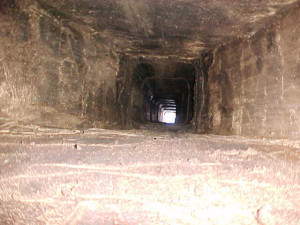by Billy Sweet | Aug 13, 2015 | Chimney Video Inspection
During a routine chimney inspection, it is difficult to understand fully what takes place as your chimney sweep explores the inner and outer cracks and crevices of your fireplace. Here at Billy Sweet Chimney Sweep, we don’t depend solely on a flashlight and a gut feeling like many sweeps do. We use the most updated technology available: a full video inspection of the innards of your chimney to ensure it is in the best shape it can be in for the upcoming fall and winter seasons.

Why is a video inspection needed?
According to the National Fire Protection Association (NFPA) and the Chimney Safety Institute of America (CSIA), a level one inspection of a chimney requires not much more than common tools and a flashlight to look at the basic structure and condition of your chimney. It is a straightforward exam at first glance. Looking for cracks that may have developed due to temperature and water level fluctuations in the masonry, as well as any excess condensation or creosote buildup is all part of the normal examination. The reason for a video inspection is simple: The camera can look at areas of your chimney that a flashlight, and therefore human eyes, are not able to. Using the Chim-Scan camera system and Wohler Vis2000-Pro, cracks and leaks, as well as presence of excess soot or other debris, are easily identified and addressed, whereas a flashlight’s beam may not make fully aware the issue.
When should I get it inspected?
Now is the time. The status of your chimney is very important to us and it is necessary to get it swept and inspected before it becomes starts being of use in the cooler months. Leaving buildup and cracks from the previous seasons can be a safety hazard as well as harmful to your chimney’s lifespan in the long-term.
Regardless of the nature of the appointment with us, we will inspect every chimney with our camera system because we want everyone to have peace of mind when it comes to the safety of the entire family. Testing for carbon monoxide is a standard practice for us, and one that we will do free of charge at every inspection. We care about your safety and we will go the extra step, every time.
by Billy Sweet | May 3, 2015 | Chimney Masonry Maintenance
There are masonry fireplaces and chimneys and there are pre-fab fireplaces and chimneys. Masonry fireplaces and chimneys are made for mortar and bricks, block, or stone, while pre-fab fireplaces are made of metal and steel. Billy Sweet Chimney Sweep has specialized in maintaining chimneys and fireplaces for over 30 years and reiterates the recommendations of the Chimney Safety Institute of America (CSIA) and Hamon Corporation.

The CSIA explains why proper maintenance of masonry chimney is so important. “All masonry chimney construction materials, except stone, will suffer accelerated deterioration as a result of prolonged contact with water. Masonry materials deteriorate quickly when exposed to the freeze/thaw process, in which moisture that has penetrated the materials periodically freezes and expands causing undue stress. Water in the chimney also causes rust in steel and cast iron, weakening or destroying the metal parts. Read more at the CSIA’s website.
Chimneys in New England are exposed to many months of constant freezing and thawing, along with exposure to rain, and intense heat, even lighting. Damage to your chimney structure means that the chimney cannot function properly and therefore exposes homeowners to fire risks, seepage of toxic gasses. Damaged masonry weakens the integrity of your home’s structure. Water causes more damages to chimneys than fires. It can cause both interior and exterior damage.
Out of Sight–Out of Mind
With such great risk caused by masonry damage, why is the proper maintenance of masonry chimneys so often overlooked by homeowners? Out of sight out of mind…until there is a problem.
Yearly inspections are the first step to maintaining your masonry chimney. During the inspection the chimney technician will look for cracks, missing bricks or blocks, water staining, and deterioration. If there are any signs of weakening, gaps, or damage, repairs can be made before small cracks become major issues.
During the inspection special attention will be paid to ensuring the chimney crown, also known as the chimney wash, is fully functional. As the CSIA explains in the homeowner’s resources section of their website, “Most masonry chimneys are built with an inadequate crown constructed from common mortar mix that is not designed for years of weather abuse without cracking, chipping or deteriorating. A proper chimney crown should be constructed of a Portland cement-based mixture and cast or formed so it provides an overhang projecting beyond all sides of the chimney by a minimum of two inches. The flue liner tile should also project above the crown a minimum of two inches.
When masonry issues are found, proper repairs should be done by a trained professional. The outside of the chimney needs to be thoroughly cleaned and all masonry repairs done before any waterproofing materials are used. Your chimney professional will know the best waterproofing agents to use to seal out water. Homeowners should not attempt to make the masonry or waterproofing repairs themselves and using paint or clear sealants instead of professional products will cause further damage by trapping the wetness rather than elevating it.
Commercial Masonry Chimneys Need Care Too.
From an industrial point of view, when it comes to maintenance, the chimney stacks at commercial and industrial sites are just as overlooked as they are on residential sites. Hamon Corporation is a group of international companies dedicated to providing “high quality innovative solutions to meet customer needs for energy efficiency and a clean environment”. Hamon urges plant and commercial maintenance teams to recognize that proper maintenance means “extended life for chimney and stacks. These passive structures are often over looked in maintenance schedules.” In an article by Arun K. Bhowmik from Hamon Custodis, Bhowmik cautions, “Chimneys are basically passive structures with few mechanical parts that require maintenance attention to keep them functional. Because of this, it is easy to overlook them – but doing so can be costly.” He goes on,” Chimneys and stacks have only one function: dispersing flue gas into the atmosphere. In the process of fulfilling that function, (chimneys) are exposed to harsh environments, both inside and outside. Flue gas, with its abrasive and corrosive characteristics, can damage the structural materials of the chimney or liner. Climatic conditions, ranging from high winds to extreme cold, place extreme stress on the structure.” To read his entire article on proper industrial chimney maintenance, click here.
When is the last time you had your masonry inspected? Are you guilty of the out of sight out of mind mentality? Don’t delay any longer; contact Bill Sweet Chimney Service today.
by Billy Sweet | Jun 26, 2014 | Chimney Maintenance
Fireplace smells and chimney odor problems may be attributed to a variety of different things. Fireplace smells come from creosote deposits—a natural byproduct of burning wood—inside your chimney. The odors are usually worse in the summer when the humidity is high, on rainy days, and/or when your air conditioner is running. Our CSIA-certified chimney sweeps can help minimize your fireplace and chimney odors!

Summer is a time when we get a lot of calls about smelly fireplaces. Let us help you get rid of the stink.
The Culprit is Tucked Away Below the Surface
Creosote absorbs into the porous masonry construction inside your chimney, embedding the fireplace smell deep beyond the masonry’s surface. A chimney sweep will remove the surface buildup of creosote to limit the possibility of a chimney fire; however, the odors that have absorbed into the masonry itself will remain. So how can you keep the smell out of your house? The answer to this question should come as no surprise.
Negative Pressure Problems
The real problem is air coming down the chimney, a symptom of overall pressure problems. Normally, as long as the draft is working correctly and there is no negative airflow in the home, the smells should remain in the chimney. In the event that negative airflow becomes a problem, the air brings the inner fireplace smells and chimney odors right along with it as it comes down your chimney. It is likely that your chimney is just the victim of a negative pressure problem. A quick solution to the negative air pressure is to crack a window at all times to let the pressure change through the window rather than the chimney.
Dampers to the Rescue
For a more permanent approach to keeping the smell that’s exuding from your fireplace and chimney’s masonry in the chimney and away from your nose, you need to limit the amount of air that’s able to come down your chimney in the first place. Closing your throat damper is a good start, however, the metal-on-metal closure is far from airtight. A top-sealing damper can help to minimize the airflow and accompanying fireplace smells from coming down your chimney. In addition to limiting the airflow problems, the top-sealing damper will keep rainwater and moisture out as well.
There’s never a bad time to get a chimney inspection. The professionals at Billy Sweet Chimney Sweep are available all year round to inspect and clean your chimney. Don’t allow these smells to become a problem for you. As soon as you first notice unpleasant odors coming from your fireplace, nip it in the bud. Our offices are opened from 7am to 5pm on weekdays, and we have a 24-hour live messaging system in place—no matter what day or time, we have a technician on-call to help you with your needs. Give us a call today!
by Billy Sweet | Feb 17, 2014 | Chimney Maintenance, Fire Safety

Before your certified chimney sweep comes, it’s good to know the different levels of inspection and what they do in each level.
While it is accurate to say that no two chimneys are the same, it used to also be that no two chimney inspections were the same. This meant that depending on who you hired to do your inspection and subsequent sweeping, the inspection process could be entirely different, with widely varying degrees of thoroughness. Thankfully, in January of 2000, the Chimney Safety Institute of America introduced three levels of chimney inspection and adopted them into code. This means that any chimney sweep who has been certified by the C.S.I.A. (as any sweep should be if he or she is working on your chimney) will conduct one of three levels of inspection according to exacting specifications.
The 3 Levels of Chimney Inspection
The C.S.I.A. has clearly outlined three levels of chimney inspection. Depending on the condition of your chimney and the dangers that exist inside, one of the technicians at Billy Sweet Chimney Sweep will be able to assess which inspection level your chimney warrants. Each inspection utilizes a closed circuit camera to gain a comprehensive look at the flue.
Level 1: The most basic (and most common) inspection looks at all “readily accessible” portions of the inside and outside of the flue, the heating appliance, and its connections.
Level 2: The next level of inspection is recommended when any changes have been made to the heating system. A Level 2 inspection will take a more in-depth look at the chimney and appliance and will include all parts of the chimney made accessible by attics, crawl spaces, and basements.
Level 3: The most comprehensive inspection of all, a Level 3 inspection involves the removal of some components of the chimney or the building to gain full access to the chimney. This inspection is recommended when a Level 2 inspection has indicated that there’s a hidden danger inside your flue.
Read more about chimney inspections here.
Billy Sweet Chimney Sweep is able to serve a wide swath of customers, as we have locations in Eastern Massachusetts, Southern New Hampshire, and Portland, Maine. Contact us today!




